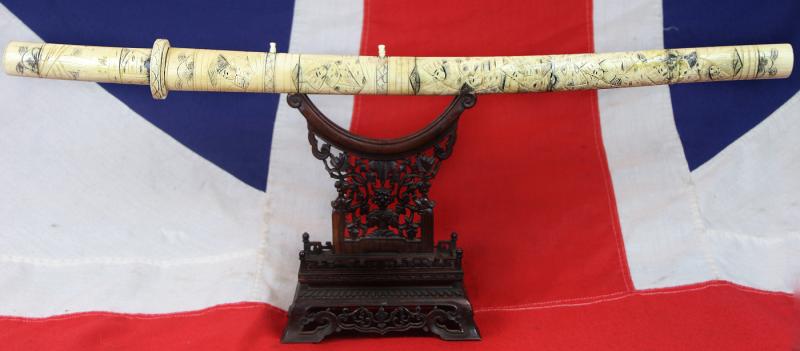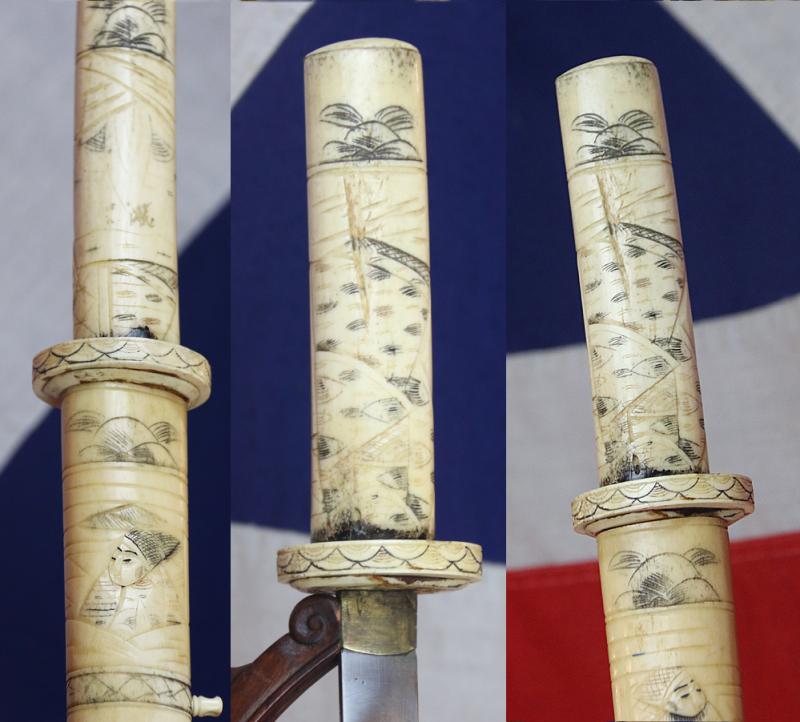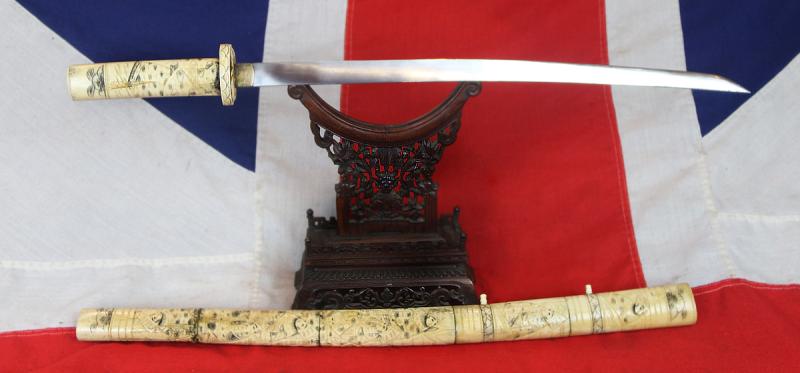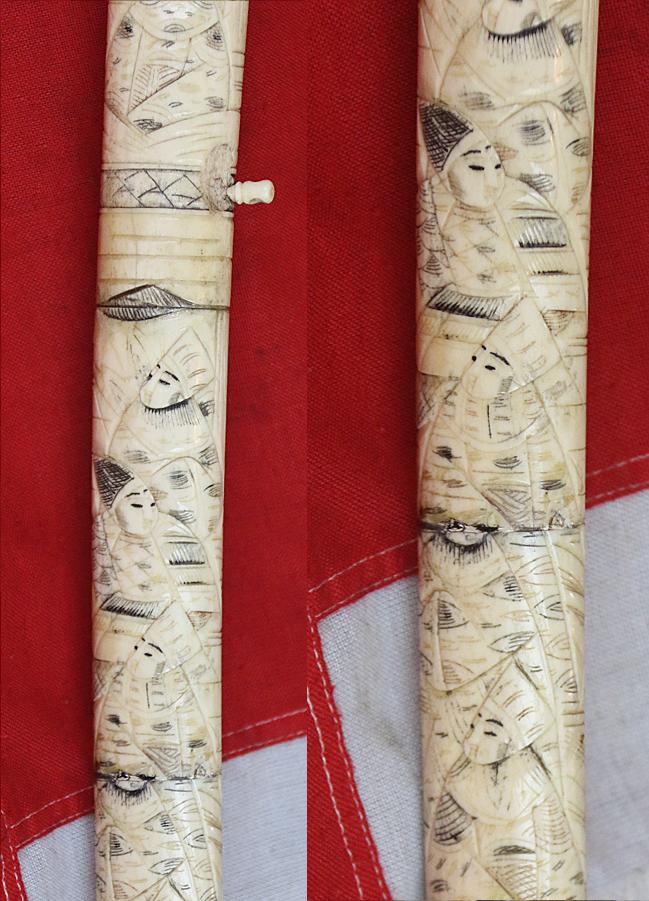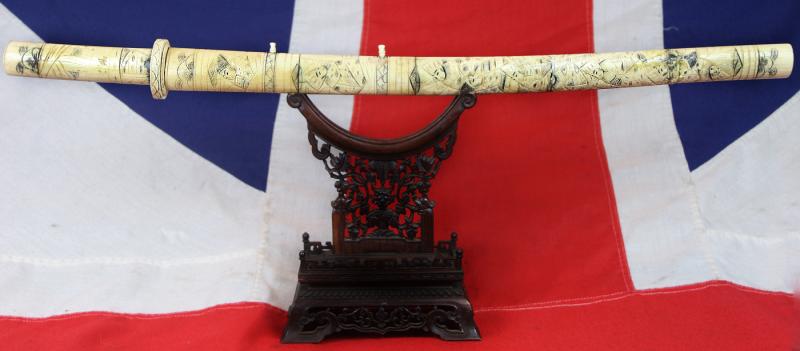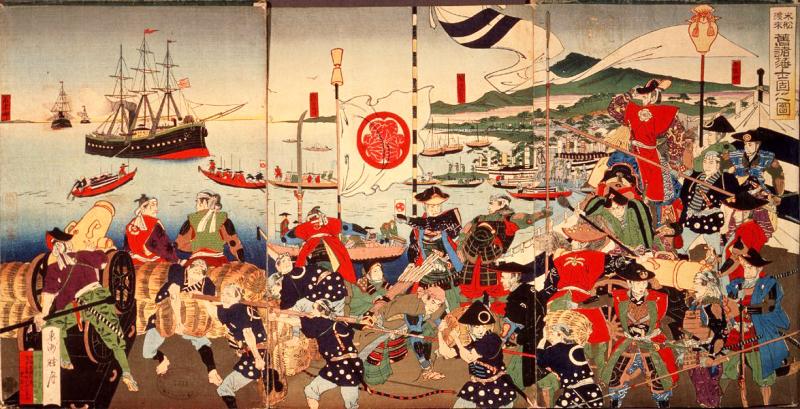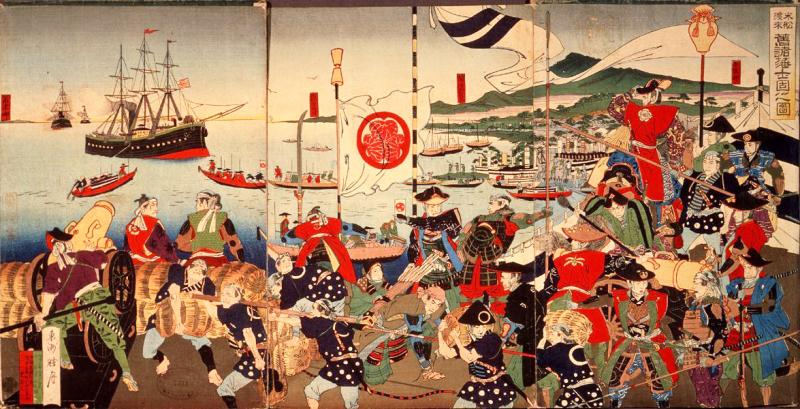A Late 19th Century Hand Carved Samurai Style Export Sword From the Late Edo to Taisho Period
A very decorative original antique Japanese sword depicting the samurai tachi of old. Meiji period, circa late`19th century, Carved bone mountings {called koshirae}, with carved figures of Japanese sages and samurai. Made in the late Meiji to Taisho period as a most decorative and attractive samurai style sword, with a Japanese Hocho tetsu {cutler's} blade.
Of course this was not a traditional sword mounting for conflict, but when Japan was opening up to the world, after being a closed feudal society for almost 400 years, and the wearing of the samurai sword was forbidden in public, starting with the Haito edict.
Thus samurai swords and dagger fittings, such as this, were made especially for the early visitors from Europe, that arrived from the early steamship trade that started in Victorian England, through companies such as Thomas Cook & Co. The tachi is a Japanese term referring to the a traditional weapon, the slung sword, of the samurai.
The Haitōrei was one of a series of steps taken by the government to abolish the traditional privileges of the samurai class. The first Haitōrei of 1870 prohibited farmers or merchants from wearing swords and dressing like samurai. This measure was in part an effort to restore public safety and order during the tumultuous period immediately after the Meiji Restoration and during the Boshin War.
In 1871, the government issued the Danpatsurei Edict, allowing samurai to cut their top-knots and wear their hair in the Western manner. However, this was not required, simply allowed and encouraged. Universal military conscription was instituted in 1873, and with the creation of the Imperial Japanese Army, the samurai lost their monopoly on military service. The hereditary stipends provided to the samurai by their formal feudal lords (and assumed by the central government in 1871) were likewise abolished in 1873. The prohibition on wearing swords was controversial with the Meiji oligarchy, but the argument that it was an anachronism not in keeping with the westernization of Japan won out.
On March 28, 1876 the Haitō Edict was passed by the Daijō-kan. It prevented former samurai, now known as shizoku, from carrying swords.
Effects
These changes in Japanese society and in the social and economic status of the samurai, then part of the four classes, were a major cause of discontent in early Meiji period Japan, and led to a number of samurai-led insurrections, particularly in western Japan and Kyūshū
Some of the carved sections have had old repairs, so it is priced accordingly.
Overall length 28.5 inches, blade length 18.5 inches
Code: 24818

